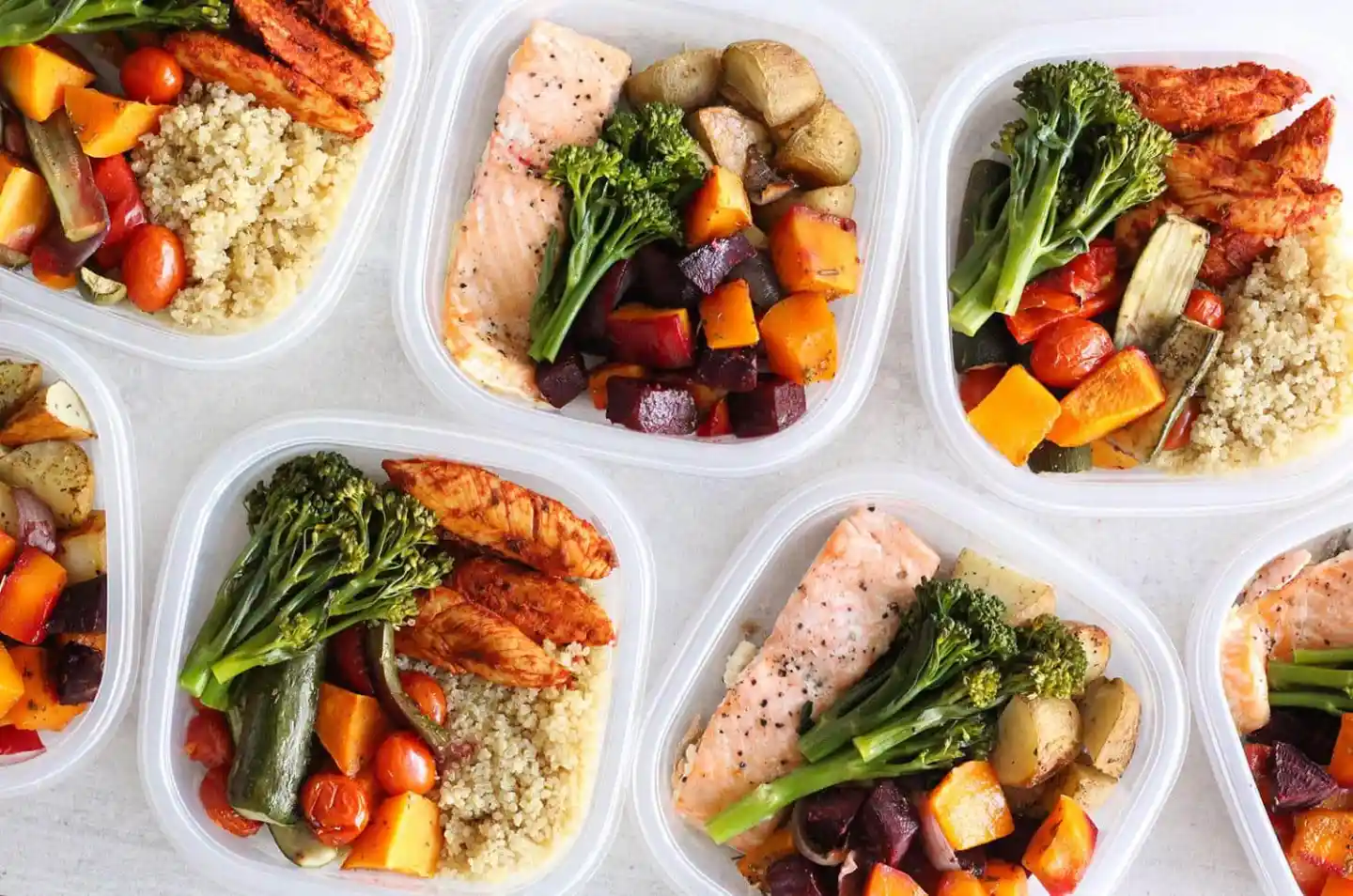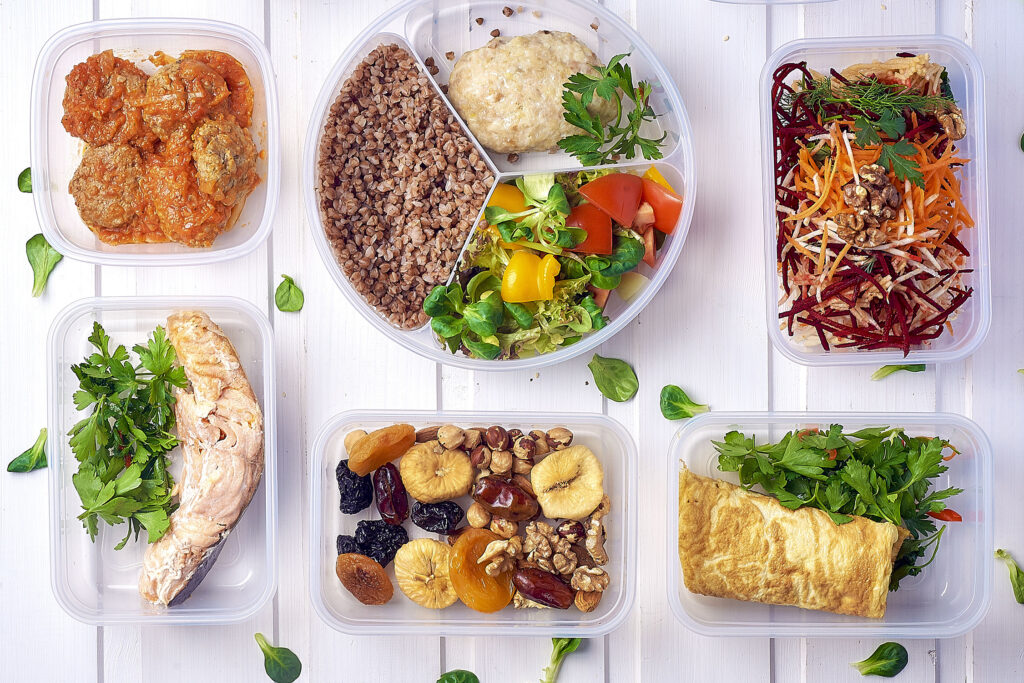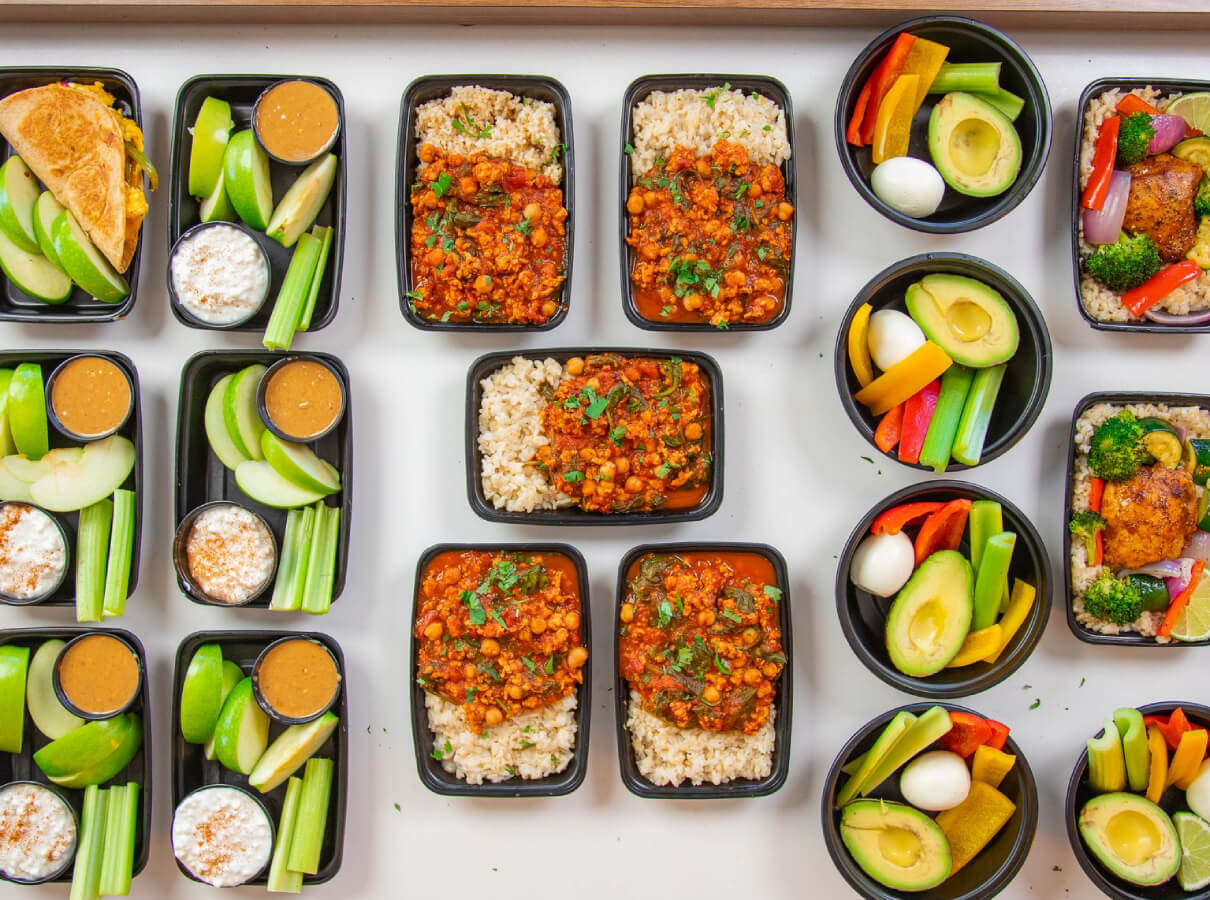Sunday evening hits, and you’re staring into your nearly empty fridge, already dreading the week ahead. You know you should be eating healthier to support your weight loss goals, but between work meetings, family obligations, and that never-ending to-do list, the thought of cooking nutritious meals every single day feels overwhelming. Sound familiar?
You’re not alone in this struggle. The good news is that meal prep for weight loss doesn’t have to be complicated, time-consuming, or boring. With the right strategy and a little upfront planning, you can set yourself up for a week of healthy, satisfying meals that actually support your goals – without spending hours in the kitchen every day.
Why Meal Prep Is Your Weight Loss Secret Weapon
Before we dive into the how-to, let’s talk about why meal prep is such a game-changer for weight loss. When you’re hungry and short on time, you’re much more likely to grab whatever’s convenient – and let’s be honest, convenient rarely equals healthy.
Meal prep eliminates the guesswork and removes the temptation to make impulsive food choices. When you have nutritious, portion-controlled meals ready to go, you’re setting yourself up for success rather than relying on willpower alone.
Plus, meal prep saves you money, reduces food waste, and actually gives you more variety in your diet. Instead of eating the same takeout rotation, you’ll be enjoying diverse, flavorful meals that keep your taste buds happy while supporting your weight loss journey.
The Foundation: Building Balanced Weight Loss Meals
Successful meal prep starts with understanding what makes a meal both satisfying and supportive of your weight loss goals. Every meal should include these three key components:
Lean Protein forms the foundation of your meals. Protein keeps you full longer, helps preserve muscle mass during weight loss, and has a higher thermic effect than carbs or fats – meaning your body burns more calories digesting it. Think chicken breast, lean ground turkey, fish, tofu, eggs, or Greek yogurt.
Fiber-Rich Vegetables should take up at least half your plate. They’re low in calories but high in nutrients and fiber, helping you feel full without derailing your calorie goals. Dark leafy greens, broccoli, bell peppers, zucchini, and cauliflower are excellent choices that prep well.
Complex Carbohydrates provide sustained energy and keep you satisfied. Choose options like quinoa, brown rice, sweet potatoes, or whole grain pasta. These digest slowly, preventing energy crashes and keeping hunger at bay.
Don’t forget about healthy fats – a small amount of olive oil, avocado, nuts, or seeds adds flavor and helps with nutrient absorption while keeping you satisfied.

Your 3-Step Weekly Meal Prep System
Step 1: Plan Your Week (15 minutes)
Start by choosing 3-4 base recipes for the week. This might sound limiting, but trust me – you’ll thank yourself when you’re not scrambling to remember five different cooking methods on Sunday.
Pick one protein preparation method (like baked chicken thighs or sheet pan salmon), one grain or starch (like roasted sweet potatoes or quinoa), and 2-3 vegetable combinations. This creates a mix-and-match system where you can create different flavor combinations throughout the week.
Write out your shopping list organized by store sections. This small step saves significant time at the grocery store and ensures you don’t forget anything important.
Step 2: Smart Shopping and Prep (2-3 hours on your prep day)
Choose one day per week as your prep day – Sunday works for most people, but pick whatever fits your schedule. The key is consistency.
Start your prep session by washing and chopping all vegetables. This single step eliminates the biggest barrier to healthy eating during busy weekdays. Store prepped vegetables in glass containers with paper towels to absorb excess moisture.
Cook your proteins and grains in large batches. Season them simply so you can add different flavors throughout the week. For example, plain baked chicken can become Mediterranean with lemon and herbs one day, or Mexican with cumin and paprika the next.
Step 3: Assembly and Storage (30 minutes)
Now comes the fun part – assembling your meals. Use glass containers when possible as they reheat better and don’t retain odors or stains like plastic can.
For most effective weight loss, aim for containers that naturally control portions. A standard meal prep container should have your palm-sized portion of protein, a cupped-hand amount of grains, and the rest filled with vegetables.
Label everything with contents and dates. This prevents the mystery meal syndrome and helps you use ingredients while they’re fresh.
5 Make-Ahead Meal Ideas That Actually Taste Good
Mediterranean Chicken Bowls
Baked chicken thighs with lemon and oregano, served over quinoa with roasted zucchini, cherry tomatoes, and cucumber. Add a dollop of Greek yogurt mixed with herbs for extra protein and flavor.
Mexican-Inspired Sweet Potato Boats
Roasted sweet potato halves topped with seasoned ground turkey, black beans, bell peppers, and a sprinkle of cheese. Serve with salsa and Greek yogurt instead of sour cream.
Asian-Style Salmon and Vegetables
Baked salmon with a simple teriyaki glaze, served with roasted broccoli and snap peas over brown rice. Pack some sliced avocado to add just before eating.
Italian Zucchini Noodle Bowls
Spiralized zucchini with turkey meatballs and marinara sauce, served with a side of roasted Brussels sprouts. This low-carb option is surprisingly filling.
Breakfast Prep: Protein-Packed Egg Muffins
Whisk eggs with chopped vegetables and a little cheese, then bake in muffin tins. These freeze beautifully and reheat in seconds for busy mornings.
Keeping It Fresh: Avoiding Meal Prep Boredom
The biggest complaint about meal prep is that food gets boring by day three. Here’s how to keep things interesting:
Sauce and Season Separately: Keep cooked proteins and vegetables plain, then add different seasonings, sauces, or dressings each day. Monday’s chicken becomes Mediterranean with tzatziki, while Wednesday’s becomes Asian with sriracha mayo.
Prep Components, Not Full Meals: Instead of making identical containers, prep ingredients that can be mixed and matched. This gives you flexibility while still saving time.
Rotate Your Vegetables: Don’t prep the same vegetables every week. Keep your taste buds interested by trying new combinations and seasonal options.
Have Emergency Backups: Keep some healthy frozen meals or easy-assembly options on hand for weeks when life gets in the way of prep time.
Making It Work for Your Real Life
Let’s be realistic – some weeks will be better than others, and that’s perfectly okay. The goal isn’t perfection; it’s progress and consistency over time.
If you’re new to meal prep, start small. Prep just lunches for your first week, then gradually add other meals as the habit becomes more natural. It’s better to successfully prep one meal per day than to attempt full weekly prep and burn out after two weeks.
Consider your schedule when planning. If you know Wednesday is always chaotic, make sure Wednesday’s meal is one that reheats easily and can be eaten quickly. If you have more time on Friday evenings, that might be when you prep a more elaborate meal.
Don’t forget about snacks. Having healthy, portioned snacks ready prevents vending machine raids and helps keep your energy stable throughout the day. Try cut vegetables with hummus, Greek yogurt with berries, or a small handful of nuts with an apple.

Your Meal Prep Success Toolkit
Essential Equipment:
- Glass meal prep containers in various sizes
- Sharp knives and cutting boards
- Sheet pans for roasting
- Large pots for grains and batch cooking
- Kitchen scale for accurate portions
Time-Saving Tips:
- Use pre-cut vegetables when budget allows
- Cook grains in a rice cooker or Instant Pot
- Utilize your oven’s multiple racks for batch cooking
- Clean as you go to avoid a massive cleanup session
Storage Guidelines:
- Most prepped meals stay fresh for 4-5 days in the refrigerator
- Freeze portions you won’t eat within that timeframe
- Store dressings and sauces separately to prevent soggy meals
- Keep a permanent marker handy for labeling dates
Making Peace with Imperfection
Some weeks, your meal prep session will go perfectly. You’ll have beautiful, Instagram-worthy containers lined up in your fridge, and you’ll feel like you’ve got your life completely together.
Other weeks, you’ll realize you forgot to buy chicken on Sunday evening, and you’ll be throwing together whatever’s in your pantry. Both scenarios are completely normal and part of building a sustainable, long-term approach to healthy eating.
The goal isn’t to meal prep perfectly every single week for the rest of your life. The goal is to create systems that make healthy eating easier and more convenient than unhealthy choices, most of the time.
When life gets chaotic and meal prep doesn’t happen, have a backup plan. Maybe that’s a few healthy frozen meals in the freezer, or knowing which restaurants near your work have good salad options, or keeping emergency proteins like canned fish or hard-boiled eggs on hand.
Your Next Steps
Starting tomorrow, pick just one component to prep for the week ahead. Maybe it’s washing and chopping vegetables, or maybe it’s cooking a batch of quinoa. Small actions build momentum, and momentum builds lasting habits.
Remember, the best meal prep system is the one you’ll actually stick with consistently. Don’t worry about creating elaborate, Pinterest-perfect meal prep spreads. Focus on simple, nutritious meals that you genuinely enjoy eating and that fit into your real life.
Your weight loss journey deserves to be supported by systems that make success easier, not harder. Meal prep is one of the most powerful tools in your toolkit – not because it’s perfect, but because it removes barriers and creates opportunities for better choices every single day.
The Sunday afternoon you spend prepping meals is an investment in your future self. Every time you reach for a healthy, pre-portioned meal instead of ordering takeout or grabbing whatever’s convenient, you’re reinforcing the habits that will get you to your goals.
You’ve got this. Start small, stay consistent, and watch how meal prep transforms not just your eating habits, but your entire relationship with food and your weight loss journey.
